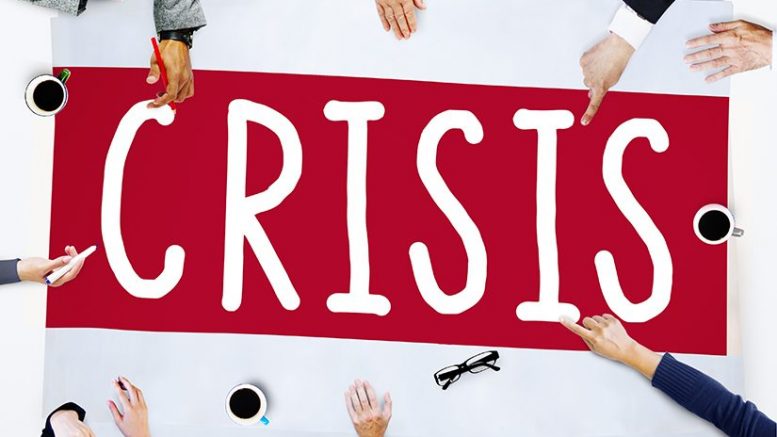‘Crisis communications’ is a term that is not alien to any Communications professional. You can love it, you can hate it, but you cannot avoid it. In today’s times of ‘breaking news’ and ‘tweets’, any news can spread like wild fire. And, crisis for a brand, like in real life, can arrive unannounced. More than often, communication professionals are not aware of crisis coming their way, which gives them almost no time to respond to them- take examples of a simple new brand launch or a tweet by a startup Founder/CEO going south.
Crisis is industry agnostic. There have been numerous brands who have been on the receiving side because of their out-of-the box campaigns. Apparel brands like United Colors of Benetton and H&M have received backlash due to campaigns that could have had racist implications. One of the recent examples is Facebook and the crisis around user data being used for political mileage.
Crisis can give cold feet to the most experienced professionals. It is the time when one needs to define the strategy, identify the right spokespeople and act fast. Effective crisis communication is an art, not mastered by many. We tend to go about our work lives and in majority of cases, do not encounter a situation that would require a skill set of this sort. However, the need for understanding how to devise robust crisis communications is a given, and more a question of when, than if.
Let’s see what are the golden rules to keep in mind when managing crisis across brands:
- Control the narrative: It is imperative to control the narrative and from day one to ensure the right messaging is going out to the external world. The message needs to be simple, consistent and delivered via the brand friendly journalists, to begin with. It is important to reach out to these journalists proactively and communicate one’s view point.
- Time is the essence in the digital era: There are numerous examples of brands like Zomato who have managed crisis well in recent times. Take the example of Zomato’s outdoor ad campaign or the recent religion issue, the company has always managed to respond and respond well, without compromising on brand proposition and brand ethos. Instead, Nestle was slow in communicating via its social handles, giving the impression that it really did not care.
- Be honest and accept mistakes: Open and transparent communication is very important. Brands tend to hide information for the fear of negative impact if the actual story is out in the open. However, this is not advisable. I was a part of the team that managed the Nokia battery recall crisis in 2007. What started out as a product advisory sent out by Nokia for battery recall, ended up becoming a huge crisis for the Nokia in India. With media trying to capitalize on this news, this snowballed into a mega crisis for the brand. However, the crisis communications strategy was well thought through and it worked wonders. Nokia decided to take this head on, and its key spokespeople actively engaged with the media, even at the risk of being questioned. The media engagement went beyond metros to sub metros and smaller cities. The objective was to communicate their viewpoint to the customers so as to reiterate the brand’s commitment to deliver high quality products.
- Give customers the utmost priority: In crisis, it is important to communicate that the customers are most important for the brand. There are numerous examples of global conglomerates who have executed well planned crisis communication strategy, keeping the customer’s interest in mind. The first brand that comes in my mind is Samsung and how it sailed through the Note 7 crisis. The company announced the global recall of around 2.5 million Galaxy Note 7 phones. They also eventually discontinued the production and sale of the device. Along with this, it built a new test lab with 700 researchers, 200,000 devices and 30,000 to replicate the cause of fire. Samsung also created a battery advisory group and gave all the processes a boost to ensure such scenarios do not arise in the future- a testimony of its long term commitment towards customer safety. While the initial years were tough, the brand did bounce back to be amongst the top players in the mobile devices space.
- Be humble: Arrogance does not take you anywhere. The brands need to remember that customer is the king. Communication in the times of crisis are sensitive and need to be done humbly, to avoid bigger setbacks to the brand. A classic case of what a brand should not do in case of crisis is the way Nestle handled the Maggi crisis. When the fingers were raised on the quality of the product, Nestle continued to argue that its own test results were correct. This led to issues with regulators, whose results were different. Nestle could have been humble about the issue and could have been more involved in testing or tried to find better ways to work around the situation.
To conclude, reputation and brand equity are of utmost importance and take years to build. Building trust is a continuous process best understood by brand custodians. While crisis communication can be taxing, it is important to keep a cool head and execute a well-planned strategy. Staying silent is not acceptable in today’s digital era as it is taken as a sign of a brand that doesn’t care about its customers. During my professional career, I have advised CEOs and spearheaded crisis communication campaign across numerous campaigns. A planned communication strategy that connects with all target audiences with a simplified, consistent messaging is what can be the differentiator for any brand. One needs to be cognizant of the sensitivities involved and communicate well.
Remember, this is not a dead end. There is light at the end of the tunnel. One needs to keep the faith and communicate well.



Leave a comment